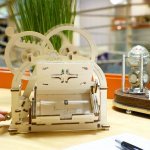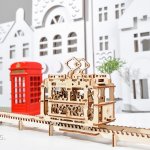Find Out About The Random Generator And Learn How It Works With Ugears
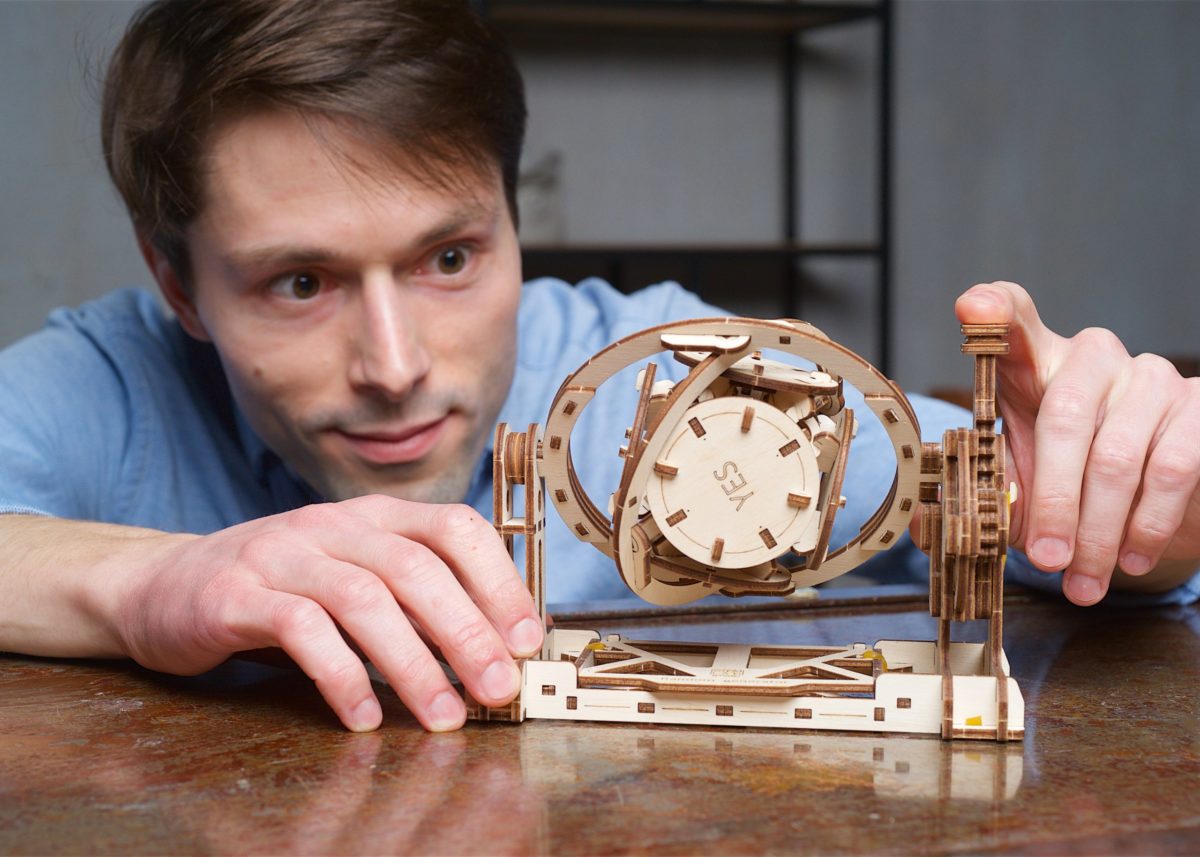
Heads or tails
For generations, humanity has been futilely wrestling with perennial questions, such as whose turn is it to take out the rubbish? Who will hoover today? And, of course, who does the dishes?
Those who volunteer to do all these chores have our eternal respect. But what if no one volunteers? The fair way to handle this would be to let chance decide and throw a coin. If you have ever bet on heads or tails, this means you got close and personal with probability theory and its practical application.

Mechanical method for random questions
Ugears suggests an alternative to the classic coin solution. That is not only elegant and fun but has an extra educational benefit. To all the questions there is now an answer with Ugears Random Generator of the STEM lab Collection.
The Random Generator is a device that generates random numbers and provides different random results based on probability theory. How it does this is exactly what the Ugears STEM wooden mechanical model will demonstrate.
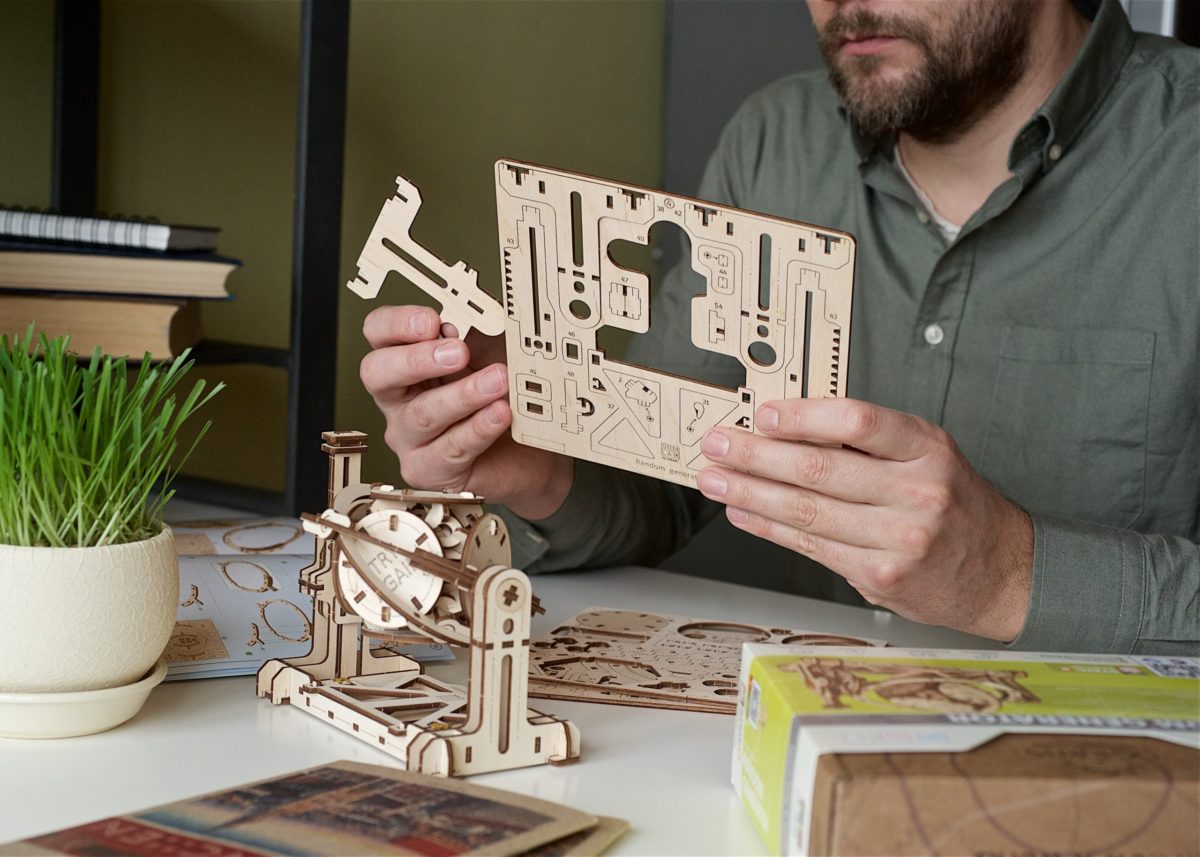
How it works?
The main element of the Random Generator’s design is a cube with an octahedron inside. It that in its turn contains a metal ball to provide weight. This construction is powered by a rack-and-gear drive initiated manually. And providing energy through a driven gear that rotates a three-axle gear. This is how the cube with all its contents begins to move, which is important for summoning the magic of randomness.
The vertices of the octahedron coincide with the sides of the cube. In this way as the energy of the system expires and it stops moving. Gravity suspends the metal ball in the lowest part of the octahedron and due to the inclination of the walls it rolls within, it ends up in one of the octahedron’s vertices pulling in down. Whichever of the vertices turns up in the bottom, the side of the cube it is attached to will be right under it and parallel to the floor. In this way, the side of the cube with the answer will be the one facing up on the opposite side.
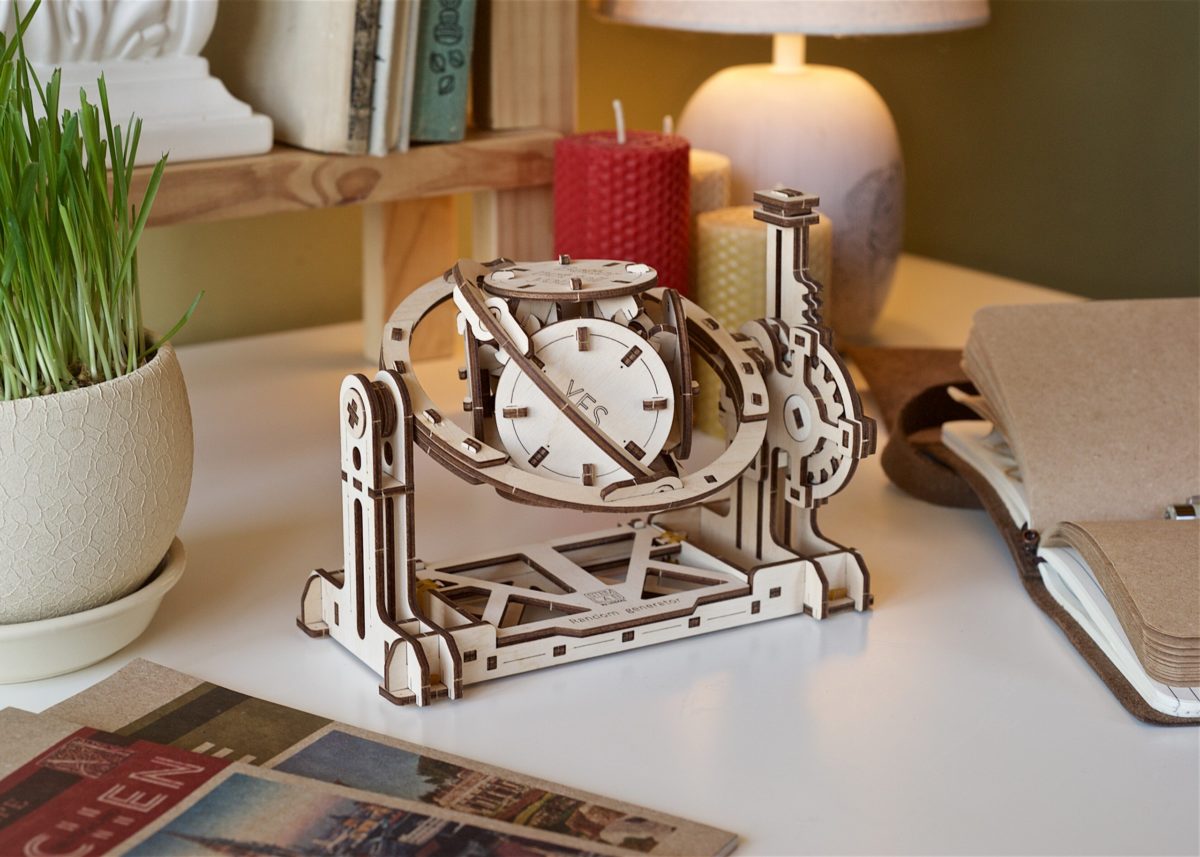
The probability to get any of the vertices facing down is virtually the same due to symmetry of the octahedron. That rotates freely around the axis of its mass. This leads us to a simple conclusion that the probability to receive one of six answers is 1/6 or 0.167.
Every side of the cube positioned by the vertex of the octahedron, has a message: one says “YES”, the other “TRY AGAIN”, etc.
Pre-order now and the box with 3D puzzles will be delivered after April 10th, 2021
